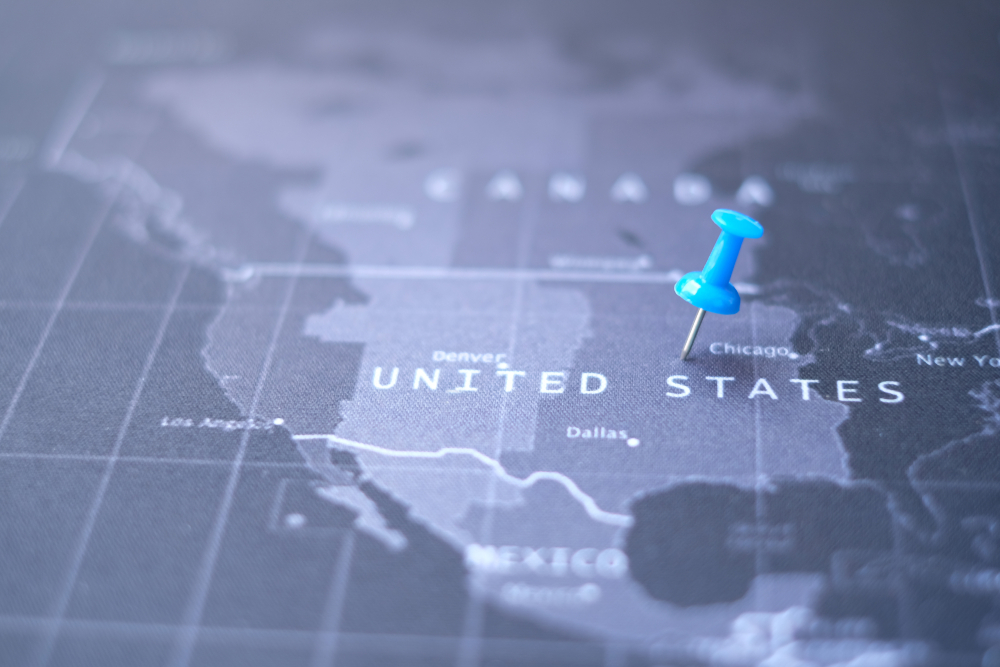The U.S. Isn’t a Market—It’s 50 Micro-Markets: How to Prioritize Where to Land
| Key Learning | What It Means for EU Leaders |
|---|---|
| The U.S. is 50 Micro-Markets | Each state has unique regulations, industries, and buyer behaviors — you can’t treat it as one market. |
| First Location Determines Success | Your entry point drives sales speed, customer access, and cost efficiency — choose wrong and you burn money. |
| Use Market Sequencing | A structured approach (sector density, procurement, customer proximity) ensures you land where you can win fastest. |
Read the full article here:
One of the fastest ways for a European company to burn through money in the U.S. is to choose the wrong starting point.
Too many executives pick their first U.S. location the way you’d pick a holiday destination—based on reputation, personal preference, or where “everyone else” seems to go. The result? You end up hundreds or even thousands of miles away from the customers who actually need what you offer.
You wouldn’t open an office in Oslo, knowing your customers were concentrated in Madrid. Don’t set up shop in Silicon Valley when your key industry cluster is in Wichita.
The U.S. isn’t one market—it’s an archipelago of regional economies, each with its own:
- Regulatory climate
- Industry clusters
- Procurement processes
- Cultural dynamics
If you treat it like a single market, you’ll waste time, money, and momentum. If you treat it as 50 micro-markets, you can build a beachhead where your odds of early success are highest—and expand from a position of strength.
Why Getting the First Location Right Matters More Than Ever
The EU–U.S. trade framework may be predictable today, but long-term stability isn’t guaranteed. That means you don’t have the luxury of “learning the market” in the wrong place. Every quarter counts.
In volatile or shifting conditions, the first location you choose determines:
- How quickly you land your first contracts
- The quality of the customer relationships you build
- How much of your budget goes to customer acquisition vs. overhead
Choose wrong, and you’ll spend your first U.S. year explaining to your board why the pipeline is thin and travel costs are sky-high.
The Three Filters for Choosing Your Landing Zone
1. Sector Density
Go where your sector is already active—and where customers have budget and authority to buy.
- A medtech company might bypass Boston for Minneapolis, home to major medical device manufacturers and hospital networks.
- A clean-energy startup might find more open doors in Texas than California, where competition for attention (and incentives) is fierce.
2. Procurement Structure
Some states centralize purchasing; others leave it to counties, municipalities, or even individual facilities. The fewer layers between you and the decision-maker, the faster you can move from intro to invoice.
3. Customer Proximity
The U.S. is big—really big. Being in the same metro area (or at least the same time zone) as your buyer isn’t just polite—it shortens sales cycles, deepens relationships, and increases trust.
Common Mistakes We See European Leaders Make
- Following the herd: Opening in New York or Silicon Valley without validating customer concentration.
- Chasing “brand cities”: Picking locations that look good on a pitch deck but don’t move the needle on sales.
- Over-indexing on incentives: Subsidies can be attractive, but they don’t make up for being far from your market.
How to Get It Right—Fast
At Traksjon, we use Market Sequencing to identify the best entry point for your sector, customer profile, and growth goals. The process is designed to deliver answers in weeks, not months:
- Map sector demand at the state and metro level.
- Overlay procurement realities to understand deal velocity.
- Score locations based on proximity to top targets, regulatory climate, and cultural fit.
This isn’t about guessing. It’s about aligning your first U.S. foothold with where you can win fastest—and scale from there.
Bottom Line
You don’t need to be everywhere in the U.S.—you need to be in the right somewhere first. Pick that starting point strategically, and you’ll get to revenue faster, protect your budget, and position yourself for expansion before competitors have unpacked their trade-show booth.
Your Next Move:
If you’re planning your U.S. entry—or if you’ve already chosen a city but aren’t seeing traction—don’t wait for the next trade or policy shift to make a change. The companies that get this right now will own the high-ground in their sector.
📩 Let’s identify your landing zone: www.traksjon.com
Frequently Asked Questions on this topic:
Score locations by sector density, procurement simplicity, and proximity to priority customers, then pilot where sales velocity is likely highest.
Not necessarily—choose the region where your buyers, partners, and procurement paths are concentrated, even if it’s a “non-brand” city.
Often you can start with partnerships or limited presence, but formalizing a U.S. entity helps hiring, payments, contracts, and procurement—get legal/tax advice.



